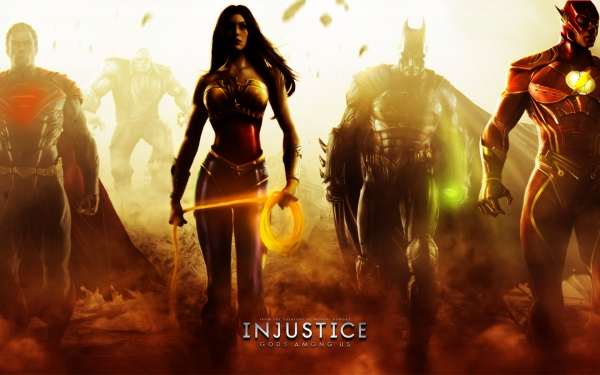So last year I wrote an article in which I listed my top 5 games of 2013. Unfortunately, mind-blowing games for me this year were kind of lacking. Sure, there were good games, but nothing that took my world by storm. If one were to ask me what my favorite games are right now, I’d probably say Dragon Age: Inquisition and Super Mario 3D World, but that would be biased towards what I’m actually in the middle of playing at the moment.
So what to do, then? Why not talk about what I’m currently bouncing back and forth between? As of right now, I’m probably actively playing more games at once than I ever have in my entire life.
Find out what I’m playing after the jump!
Bouncing back and forth between games is something that I don’t necessarily recommend. Lots of times, doing so will make you not really appreciate something to its fullest - something I’m hoping doesn’t happen to me. Luckily, a few of the games I’m bouncing between are ones I’ve played a gazillion times before.
With the recent addition of the iPad Air to my tech collection, I’ve gained yet another platform with which to play games. It just so happens that nearly every old-school Final Fantasy title in existence is available for Apple and Android devices, so I’ve been playing some of those. In my rotating queue are Final Fantasy IV: The After Years (a 3D remake of the 2D original), Final Fantasy V, Final Fantasy VI, and the new(er) Final Fantasy Dimensions. Truthfully, I’ve spent most of my handheld/mobile time playing Final Fantasy VI, but how could I not? Like Chrono Trigger, it’s one of those classic RPGs that, once you start playing, you just can’t put it down!
Another mobile time killer that I’ve been really digging on is Angry Birds: Transformers. I’m a huge Transformers fan, and I really like Angry Birds, so the combination of the two franchises really appeals to me. The gameplay for AB:TF is quite a bit different from the traditional AB games, but it’s an absolute blast. I just really wish the game didn’t try to goad you into buying crystals (with real-world money) to keep you constantly playing. Instead, you’re forced into long periods of upgrading your Transformers that keeps you from playing the game for long stretches if you don’t want to let go of your money. Personally, when it comes to a game like that, micro-transactions are right out, so I have to sit and wait a lot with that game… But I usually just switch to FFVI instead!
On the PC front, you’d think I’d be playing a lot of games on my Mac, right? In case you didn’t read my last “Lack of Apple Hate” article, you should know that that isn’t happening at all. I found out very quickly how much the MacBook Pro is NOT good for gaming. That being said, I’ve still got my ASUS laptop, and I’ve been enjoying several recent purchases on it. The Vanishing of Ethan Carter, The Sims 4, Final Fantasy XIII (again), and Final Fantasy XIII-2 are all finding their respective ways in and out of my eyeballs. A recent time card for Final Fantasy XIV will probably have me returning to that game soon, as well.
As I mentioned above, I’ve been playing Dragon Age and Mario 3D World on the consoles. I got them both for Christmas (along with the PS4 version of GTAV), and both are great games. Dragon Age is a little overwhelming in terms of content, and 3D World is shaping up to be - in my opinion - one of the best 3D Mario games yet.
There are also a few games I need to get back to on consoles. Games such as Alien: Isolation (though I still don’t know if I’ll actually go back to that one or not), Shadow of Mordor, Assassin’s Creed: Unity, etc. There is also one game on the 3DS that I really want to get back to: Bravely Default. It’s pure, old-school RPG goodness!
I’m really looking forward to doing reviews on all of these games in the future, but as you know, I like to finish the games before I do. I’m thinking, however, that I might have to change that rule a little bit going forward. As rapidly as my game collection increases, I’ll never be able to finish games in a timely manner for review purposes. So what I’m planning on doing is writing more “Thoughts” articles. With that format, I can at least let everybody know what I’m thinking about a particular game at the moment, and if I have time for a full review later on, I’ll put that out there.
So 2014 may not have blown me away with its release lineup (yet), but I’m playing more games at once than I ever have. 2015, on the other hand, will see some releases that I’m hugely excited for: The Witcher 3, Mortal Kombat X, Final Fantasy XV (maybe… probably not. I’ll believe it when I see it), and more! So there are at least three candidates for my top 5 next year!
Here’s to hoping that everyone had a great Christmas! We’ll see you in 2015!
-Josh
By the way, if I were really forced to pick a Game of the Year for 2014 right now, I’d probably pick The Vanishing of Ethan Carter. So there ya go.





























